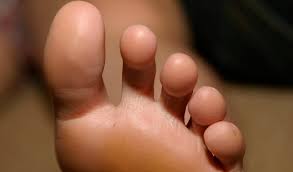Large fibre neuropathy is a condition that affects the large nerve fibres responsible for carrying sensations like touch and vibration. It can cause discomfort and affect your daily life. In this article, we will explore the symptoms, causes, and treatments for large fibre neuropathy, as well as discuss how the right footwear can make a difference.
What is Large Fibre Neuropathy?
Large fibre neuropathy is a type of peripheral neuropathy, a condition that results from damage to the peripheral nerves. These nerves are located outside the brain and spinal cord, and they play a crucial role in sending signals between your central nervous system and the rest of your body.
Symptoms of Large Fibre Neuropathy
The symptoms of large fibre neuropathy can vary, but common signs include:
-
Numbness or tingling: Often felt in the hands and feet, this sensation can spread to other parts of the body.
-
Pain: Ranging from mild discomfort to severe pain, it often feels like a burning or stabbing sensation.
-
Loss of coordination: Difficulty with balance and coordination can occur, making it challenging to walk or perform daily tasks.
-
Weakness: Muscle weakness may develop, particularly in the arms and legs.
-
Reduced reflexes: You might notice a decrease in your reflex reactions, especially in the ankles and knees.
 Causes of Large Fibre Neuropathy
Causes of Large Fibre Neuropathy
Several factors can lead to large fibre neuropathy, including:
-
Diabetes: One of the most common causes, high blood sugar levels can damage nerve fibres over time.
-
Infections: Certain infections like Lyme disease, HIV, and hepatitis C can damage nerves.
-
Autoimmune disorders: Conditions such as lupus or rheumatoid arthritis may lead to nerve damage.
-
Vitamin deficiencies: Lack of essential vitamins like B12 can harm nerve function.
-
Toxins: Exposure to toxic substances like heavy metals or chemotherapy drugs can damage nerves.
-
Genetic factors: Some people may inherit conditions that predispose them to neuropathy.
Diagnosis of Large Fibre Neuropathy
Diagnosing large fibre neuropathy involves a combination of medical history, physical examination, and diagnostic tests. Your healthcare provider may recommend:
-
Nerve conduction studies: These tests measure the speed of electrical signals travelling through your nerves.
-
Electromyography (EMG): This test evaluates the electrical activity in your muscles.
-
Blood tests: To check for underlying conditions like diabetes or vitamin deficiencies.
-
Imaging tests: MRI or CT scans may be used to identify any structural issues affecting the nerves.
Treatment Options for Large Fibre Neuropathy
While there is no cure for large fibre neuropathy, several treatments can help manage symptoms and improve quality of life.
Medications
-
Pain relievers: Over-the-counter options like ibuprofen or prescription medications like gabapentin can help manage pain.
-
Antidepressants: Certain antidepressants can also alleviate pain associated with neuropathy.
-
Topical treatments: Creams containing capsaicin or lidocaine may provide localised relief.
Lifestyle Changes
-
Regular exercise: Engaging in low-impact activities like walking or swimming can improve muscle strength and coordination.
-
Healthy diet: Eating a balanced diet rich in essential vitamins and minerals supports nerve health.
-
Avoiding toxins: Reducing exposure to harmful substances can prevent further nerve damage.
Alternative Therapies
-
Acupuncture: Some people find relief from neuropathy symptoms with acupuncture treatments.
-
Physical therapy: Working with a physical therapist can help improve mobility and reduce pain.
Importance of Footwear for Neuropathy
Footwear plays a significant role in managing large fibre neuropathy, especially for those with foot involvement. The right shoes can provide support, reduce pain, and prevent further complications.
Features to Look for in Neuropathy Footwear
When selecting shoes for neuropathy, consider the following features:
-
Cushioning: Good cushioning absorbs shock and reduces pressure on the feet.
-
Support: Arch support and a firm heel counter help maintain stability and alignment.
-
Wide toe box: Extra room in the toe area prevents irritation and allows for natural movement.
-
Adjustability: Velcro straps or laces ensure a snug fit without constriction.
-
Breathability: Materials that allow air circulation keep feet dry and comfortable.
Diabetic Shoes and Their Benefits
Diabetic shoes are specifically designed for individuals with diabetes and neuropathy. They offer:
-
Seamless interiors: Reducing the risk of friction and sores.
-
Extra depth: Accommodating custom orthotics and swelling.
-
Protective outsoles: Providing stability and preventing slips and falls.
Conclusion
Large fibre neuropathy can significantly impact your quality of life, but understanding the symptoms and treatments can help you manage the condition effectively. With the right approach, including medication, lifestyle changes, and proper footwear, you can alleviate symptoms and maintain your independence. Always consult with your healthcare provider to tailor a treatment plan that suits your specific needs.
If you suspect you have large fibre neuropathy, don't hesitate to seek professional guidance. Early intervention can make a difference in managing symptoms and preventing further complications.








